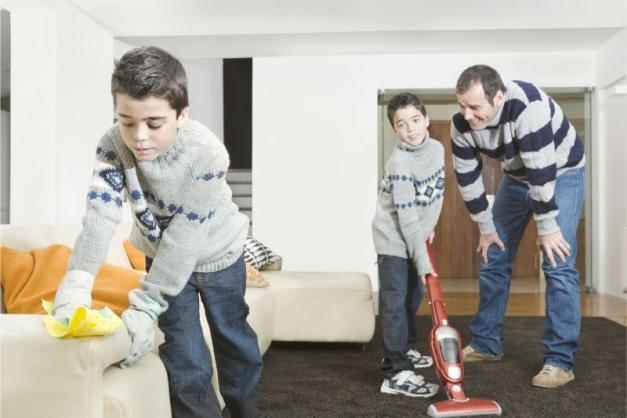Shared responsibility for housework makes family life more enjoyable. It doesn’t matter if you need to put dirty clothes in the hamper or do a big job like cleaning the kitchen floor. Each family member can help in a way that suits their age and other responsibilities. This basic cleaning guide will help you and your family find ways to get involved in making the housework less stressful and more of a team effort.
HOW TO CLEAN
PRACTICE PREVENTION
- Reduce clutter as much as possible. Too much clutter makes it difficult to clean and can lead to allergens and dust accumulation.
- To keep your hands clean and remove germs and dirt from household surfaces, wash them with soap and warm running water.
- To protect floors and carpets from allergens, wipe shoes off mats or entryway rugs.
- To prevent the growth of mold, mildew and bacteria-loving bacteria, keep bathrooms and kitchen surfaces clean and dry.
- After shower use, leave curtains and shower doors open so that shower walls can air dry.
- As soon as possible, treat stains and spots on clothes and garments.
- After preparing or eating food, immediately clean up any crumbs and food scraps.
- Spills should be cleaned up immediately after they are dried.
- To prevent water spots or rings on wood surfaces, place coasters underneath beverage glasses.
GIVE PREFERENCE TO THE IMPORTANT JOB JOBS
- To reduce the risk of foodborne disease, clean and disinfect cutting boards and kitchen counters before and after you prepare food.
- To kill mold, mildew, and germs that could trigger asthma attacks, disinfect the sinks, toilet bowls, tubs, and showers.
- To remove allergens from dust mites, wash sheets in hot or warm water every week to keep them clean and fresh.
- Once a week, wash towels and bathmats.
- Use a dusting product to dust hard furniture regularly.
- Vacuum your carpets once a week and mop your wood floors once a month.
TIPS FROM EXPERTS
For washing the laundry,
- To find out how to care for your garment, check the label on the clothing.
- Match the load with the water level and wash cycle.
- To prevent dyes from bleeding onto lighter-coloured fabrics, separate colors from whites. Separate heavily soiled items and lightly soiled items.
- The recommended detergent amount should be used per load. If soil, water, or machine conditions are different from the average, adjust the detergent amount.
Bathroom,
- Use a non-abrasive, all-purpose or disinfectant (antibacterial) cleaner to clean the bathtubs and stalls. For best results, make sure to read the label.
- Use a soap scum removal product to get rid of the “ring around your bathtub”.
- To prevent mildew growth, spray your walls and curtains with a daily shower spray.
- Use a non-abrasive, all-purpose cleaner to clean vinyl and ceramic tiles.
Tackling kitchen surfaces,
- Use an antibacterial cleaner to clean countertops and kill bacteria from raw meat, poultry, or fish.
- Use a non-abrasive, all-purpose cleaner or baking soda and water mixture to clean refrigerator shelves and walls.
- First, vacuum or sweep the floor. Next, mop the room, starting in the far corner and moving toward the exit. Choose the right cleaner for your type of floor.
- You can use an abrasive cleaner for stubborn soils such as food particles or grease residues in sinks. To determine if the cleaner is suitable for your finish, read the label.

